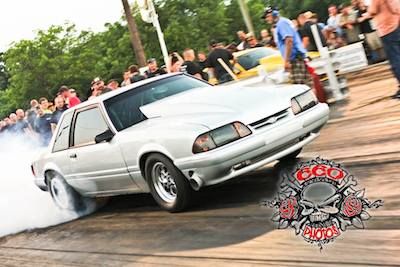This will be interesting to see this story unfold.
Announcement
Collapse
No announcement yet.
British Farmer finds 20 brand new Spitfire's from WWII
Collapse
X
-
Its true....me and my dad were discussing it over the weekend. While he TECHNICALLY may have been a farmer at one point.....he has spent the last few years researching the story and has spent a good deal of money trying to find them. Supposedly not only did he locate the hidden planes which were professionally buried 40 ft underground in a huge cavern....a lot of weaponry is also down there. I'm quite certain the British government will lay claim to it all...but he SHOULD be rewarded quite nicely for the find. Those planes are worth a LOT of money.
Comment
-
I'd bet money that they'd be his under whatever salvage laws are applicable, especially since the British government basically threw them all away.Originally posted by ram57ta View PostIts true....me and my dad were discussing it over the weekend. While he TECHNICALLY may have been a farmer at one point.....he has spent the last few years researching the story and has spent a good deal of money trying to find them. Supposedly not only did he locate the hidden planes which were professionally buried 40 ft underground in a huge cavern....a lot of weaponry is also down there. I'm quite certain the British government will lay claim to it all...but he SHOULD be rewarded quite nicely for the find. Those planes are worth a LOT of money.ZOMBIE REAGAN FOR PRESIDENT 2016!!! heh
Comment
-
I would hope so but wouldn't be surprised at all if he get's screwed over either.Originally posted by Yale View PostI'd bet money that they'd be his under whatever salvage laws are applicable, especially since the British government basically threw them all away."It's another burrito, it's a cold Lone Star in my hand!"
Comment
-

Fox News Story....
Yar -- it's buried PILOT treasure!
Like a treasure chest stuffed with priceless booty, as many as 20 World War II-era Spitfire planes are perfectly preserved, buried in crates beneath Burma -- and after 67 years underground, they're set to be uncovered.
The planes were shipped in standard fashion in 1945 from their manufacturer in England to the Far East country: waxed, wrapped in greased paper and tarred to protect against the elements. They were then buried in the crates they were shipped in, rather than let them fall into enemy hands, said David Cundall, an aviation enthusiast who has spent 15 years and about $200,000 in his efforts to reveal the lost planes.
The 62-year-old man -- a British farmer by trade -- realized the fate of the aircraft thanks to an offhand comment a group of American veterans made to a friend, he told the Sydney Morning Herald.
''They told Jim: 'We've done some pretty silly things in our time, but the silliest was burying Spitfires.' And when Jim got back from the U.S., he told me,'" Cundall said.
The location of the planes, which remains a closely kept secret, was confirmed during a recent trip to the Far East country, he said.
''We sent a borehole down and used a camera to look at the crates. They seemed to be in good condition," Cundall told the Herald.
The Spitfire Mark XIV planes are rare for more than one reason: They used Rolls Royce Griffon engines rather than the Merlins used in earlier models to achieve tremendous speeds. Griffon-powered planes could reach 440 mph thanks to the hefty, 2,050-horsepower engines.
When production of the planes ultimately ended in 1947, 20,334 Spitfires of all versions had been produced, but just 2,053 of them were Griffon-powered versions, according to Encyclopaedia Britannica.
The planes were deemed surplus and were buried in Aug., 1945 -- potentially along with another eight later in the year. At that time, propeller planes were falling out of fashion in favor of newer jet-engine designs -- Cundall said Spitfires "were 10 a penny." British military officials decided burying them was cheaper and more practical than bringing them home.
International sanctions prevent military material from leaving the country, but a recent visit by British Prime Minister David Cameron may enable the safe exhumation and return of the planes to England.
Only about 35 Spitfires are currently flying.
Read more: http://www.foxnews.com/scitech/2012/...#ixzz1sXV1hZH3
Comment



Comment